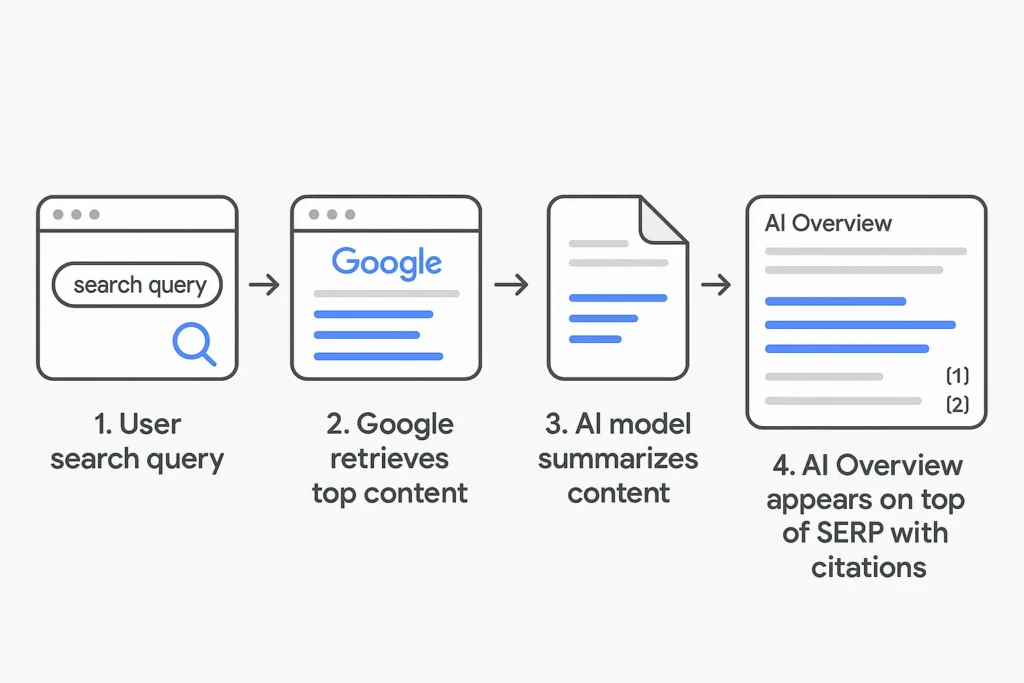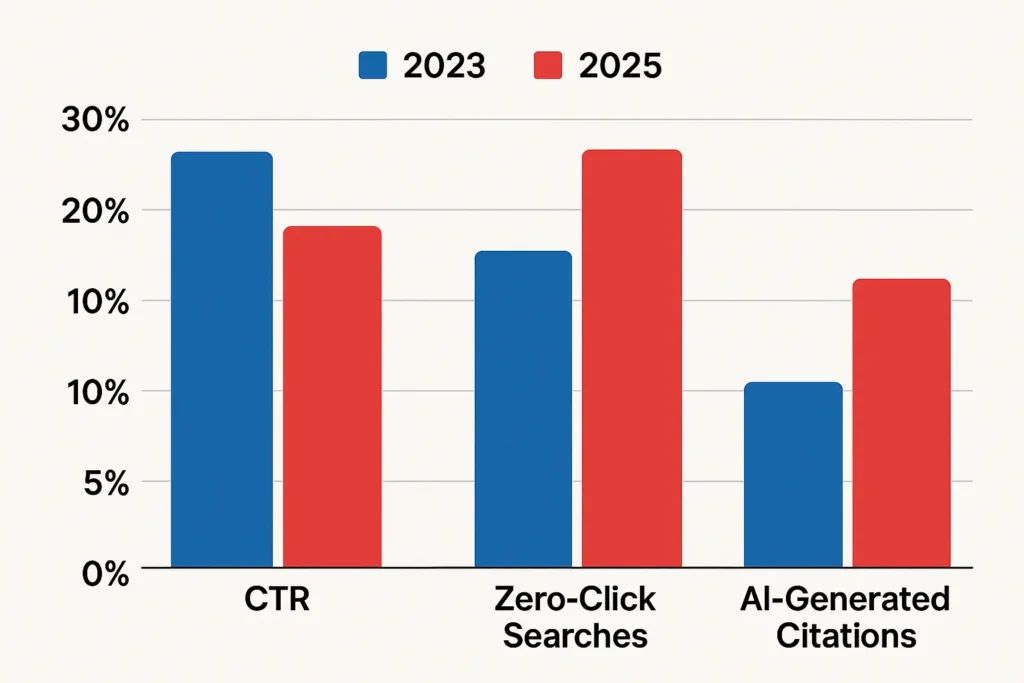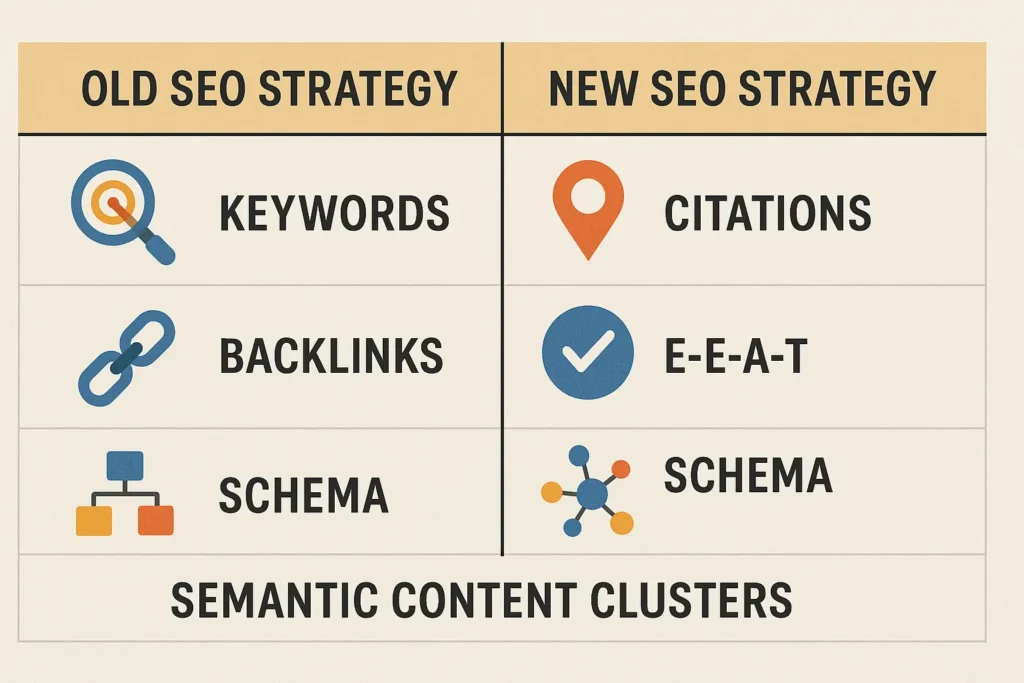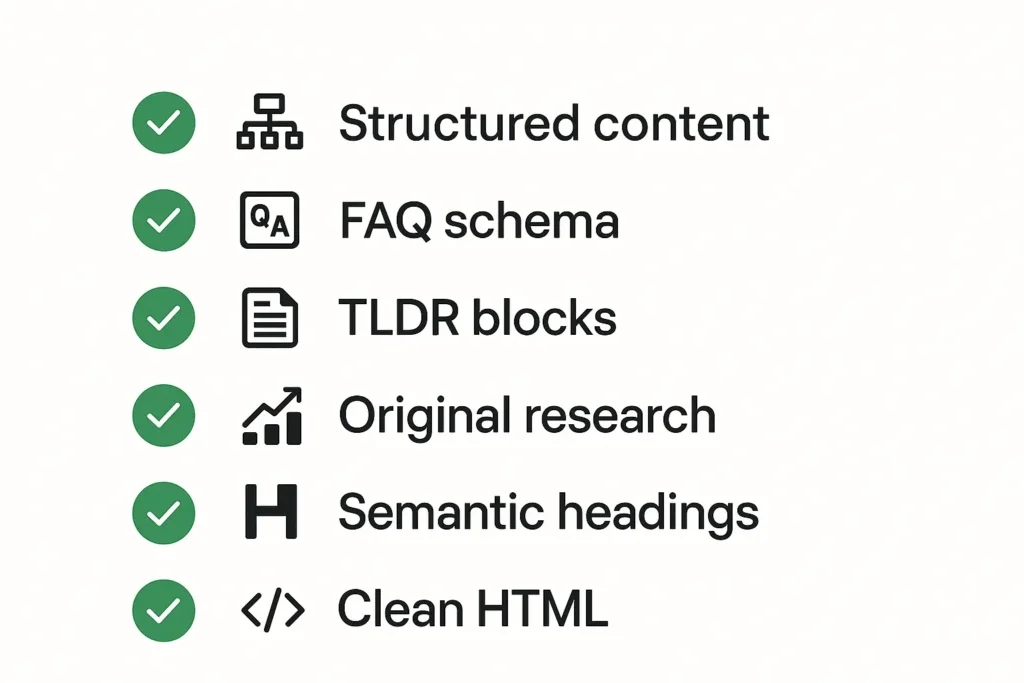The Paradigm Shift in SEO, In 2025, the nature of search visibility is undergoing a foundational change. Google’s rollout of AI Overviews, a core feature of the Search Generative Experience (SGE), is redefining how information is surfaced—and how users engage with content. Instead of clicking links to browse full articles, users now receive AI-summarized responses generated in real time from multiple sources.
This disrupts the traditional SEO playbook. Organic rankings alone are no longer sufficient; your goal now is to be included and cited by the AI systems driving the Overviews.
The question for SEOs and content marketers is no longer just, “How do I rank on page one?” but:
“How do I become the trusted source that Google’s AI summarizes and cites?”
What are Google AI Overviews (2025 Update)?
Google AI Overviews are dynamic, AI-generated search summaries designed to provide users with quick, contextual answers across complex queries. These summaries:
- Use large language models (Gemini family) and Retrieval-Augmented Generation (RAG)
- Synthesize content from multiple sources
- Are shown at the top of SERPs in response to certain query types
Where AI Overviews appear most:
- Multi-step informational queries (e.g., “How to build a home gym on a budget”)
- Health and wellness content (e.g., “Natural remedies for anxiety”)
- Product comparisons and research-driven commerce
This is not an evolution of Featured Snippets—it’s a new layer of Google Search, often replacing the need to click through to source content.

What AI Overviews Mean for SEO?
AI Overviews change the relationship between content, visibility, and user action. The following dynamics are now emerging:
1. Reduced Click-Through Rates (CTR)
The AI gives users what they want directly in the SERP. That means less incentive to visit your page—even if you’re cited.
2. Shifting Content Value
Pages optimized for top-of-funnel (TOFU) visibility without unique insight are now at risk. Content must offer distinct value to be cited.
3. The Rise of AI Citation Authority
Citations in Overviews are not based solely on backlinks or traditional ranking. Instead, Google AI prioritizes:
- Clarity of explanation
- Factual accuracy
- Topical authority (via structured clusters and schema)
4. “Ghost Traffic” and Untracked Attribution
You may be driving influence in the search journey—without receiving the traffic. This creates new measurement blind spots.
Google AI Overviews SEO Impact – April 2025 and Beyond
In April 2025, industry-wide data confirms several key trends:
| Metric | Pre-AI Overviews | April 2025 |
|---|---|---|
| Organic CTR (Positions 1-3) | 43% | 18% |
| Zero-click Searches | 56% | 74% |
| Featured Snippet Value | High | Medium |
| Direct Citation-Based Traffic | Rare | Growing |

These changes have accelerated the death of thin content and put pressure on publishers to differentiate through expertise, originality, and structured formatting.
How Do AI Overviews Impact SEO Strategies?
From: Ranking pages for high-volume keywords
To: Structuring content for retrievability and citation by AI
Strategic Shifts:
- Entity-first SEO: Google’s AI understands topics semantically. Target clusters, not just keywords.
- E-E-A-T enhancement: Author bios, medical reviewers, and citations are not optional—they are expected.
- Use-case driven content: AI Overviews favor content that answers specific problems or workflows clearly.
Example: A guide titled “Best hiking shoes” should now focus on decision-making criteria (terrain, durability, fit) rather than just listing brands.

How to Show Up in AI Overviews SEO?
1. Answer the Core Question Early
Use the inverted pyramid model. Deliver the value up front in <60 words. Follow with depth and context.
2. Use Schema Markup Thoughtfully
Add structured data like:
- Article
- FAQ
- QAPage
- HowTo
- Speakable (for AI and voice search inclusion)
3. Build Topical Clusters
Rather than isolated posts, build supporting content around a central pillar. This enhances your topical authority.
4. Include Primary Research or Unique POVs
If you want to be cited, avoid rehashing what others have said. Add:
- Original stats
- Graphs/charts
- Expert interviews
5. Prioritize Clean, Semantic HTML
AI Overviews pull content from visible areas of the page—not just metadata. Avoid distractions and prioritize readable code.
Negative Impacts of AI Overviews on SEO
- Zero-click content dominance: AI provides answers without rewarding creators with traffic.
- Loss of brand voice: AI may strip away your tone and attribution.
- Favoritism for large publishers: Google’s risk aversion means authoritative sources win, even with weaker content.
- Measurement challenges: No standard method exists yet to track AI citations or influence.
Google AI Overviews SEO Best Practices 2025
| Best Practice | Why It Works |
|---|---|
| Structured lists & summaries | AI parses this format easily |
| Semantic headings (H2, H3) | Clarifies intent and supports retrievability |
| TL;DR blocks or content previews | Summarization-ready for Overviews |
| Author expertise declarations | Supports E-E-A-T inclusion |
| Up-to-date content & sources | AI favors recent, accurate data |

Future-Proofing: What to Focus on Now?
- Track AI traffic with blended analytics models (combining GSC data, SERP analysis, and behavior patterns)
- Redesign content to include modular summaries
- Invest in content UX: mobile speed, layout clarity, scroll engagement
- Experiment with multimodal content: Video + transcript + short-form text
Conclusion: The SEO Mindset Shift
Google AI Overviews have forced SEOs to move from keyword chasers to value architects. In this new paradigm, winning means helping Google’s AI help the user.
You are no longer just writing for people—you’re writing for people through AI.
The path forward is clear:
- Focus on real value
- Be structurally sound
- Embed expertise
- Embrace semantic clarity
Those who adapt will not just survive—they’ll shape the future of visibility.
FAQ’s
How can I track traffic from AI Overviews in Google Search Console?
Currently, Google Search Console does not isolate AI Overview clicks or impressions. However, you can infer potential impact by:
1. Monitoring fluctuations in branded search queries
2. Comparing CTR drop vs. stable impressions
3. Using third-party SERP analysis tools to identify citations
4. Google may eventually roll out AI-specific tracking features as the ecosystem matures.
Can small websites appear in Google AI Overviews?
Yes, but it’s harder. Google’s AI prioritizes authority, clarity, and originality. To compete:
1. Use expert quotes and first-hand experience
2. Publish focused topical clusters
3. Apply correct schema markup and semantic headings
Small brands that publish unique perspectives or niche expertise can break through—especially on emerging or specialized topics.
How do AI Overviews affect featured snippets and rich results?
AI Overviews often replace or outrank featured snippets, especially for multi-intent queries. While snippets still appear, their visibility and CTR have dropped. Structured data remains crucial, but your goal should shift from chasing snippets to becoming a top source for summarization.
What content types perform best in AI Overviews?
AI Overviews prefer: Actionable how-tos, Comparative guides, Expert-driven answers, Lists with decision-making frameworks, Adding TL;DR summaries, use-case breakdowns, and visual elements (charts, step flows) increases the chance of being cited.
How frequently are AI Overviews updated with new content?
AI Overviews are dynamic and continuously updated, drawing from Google’s indexed web in near real-time. Updating your content regularly, citing new data, and refreshing titles/headings can help maintain visibility in Overviews.
Can I opt out of being included in AI Overviews?
Yes. You can block AI inclusion by:
> Using the nocache or noarchive directives
> Disabling summarization via data-nosnippet
However, opting out may reduce overall search visibility. Most brands choose to adapt rather than block.
Is there a way to get notified if my site is cited in an AI Overview?
As of now, Google doesn’t provide direct citation alerts. You can:
1. Monitor keywords manually using tools like Ahrefs or Semrush
2. Track behavioral changes in analytics
3. Set up brand + keyword alerts via Google Alerts or Mention
A dedicated AI citation index may emerge in the future as demand grows.



